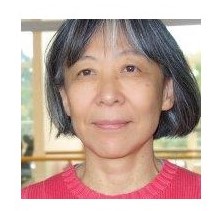
MD, Tohoku University, Sendai, Japan, 1986, and PhD, Karolinska Institutet, 1998.
The current position is a senior scientist at Karolinska Institutet, CLINTEC, Transplantation Surgery, Stockholm, Sweden.
I trained as a surgeon at a city hospital and also at the Department of Thoracic Surgery in Japan. The specific interest is transplantation immunology. My research topics are immune responses in pig-to-human xenotransplantation, pancreatic islet transplantation, and tolerance induction in organ transplantation. I am currently involved in a clinical project to induce organ-specific tolerance by cell therapy in deceased donor liver transplantation.
Immunological characterization of brain-dead donor blood components and their effect on the generation of donor-specific immunomodulatory cells in vitro.
Makiko Kumagai-Braesch1,2, Nils Ågren1,2, Sergi Olive Palau1, Jacek Kuźnicki2, Katarzyna Skinderowicz2, Ming Yao1,2, Bo-Göran Ericzon1,2.
1Transplantation Surgery, CLINTEC, Karolinska Institutet, Stockholm, Sweden; 2ME Transplantation, Karolinska University Hospital, Huddinge, Sweden
Introduction: Peripheral tolerance induction by adoptive transfer of ex vivo generated donor-specific immunomodulatory cells (DSIMC) has shown promise in the pilot study of the living donor liver transplantation setting. Application of this strategy is currently being explored into donor after brain death (DBD) liver transplantation. Brain death is associated with a systemic release of inflammatory cytokines. Therefore, plasma and cells from deceased donors may negatively affect the generation of DSIMC. In this study, we examined how DBD blood components affect cell culture viability and generation of DSIMC, compared to components sourced from healthy controls (HC).
Methods: Peripheral blood mononuclear cells (PBMC) were separated from the peripheral blood of DBD and healthy controls (HC). The viability and various gene expressions of PBMC were compared between these two groups. Plasma cytokine profiles were examined using a multiplex immunoassay. The effect of the plasma was compared by culturing HC-PBMC for seven days with 10% DBD plasma or HC plasma. The viability and cytokine production was subsequently examined.
Results: DBD-PBMC was fragile compared to HC-PBMC. The relative expression of an apoptotic gene and the IL-10 gene increased in DBD-PBMC compared to HC-PBMC. Also IL-6 and IL-8 were increased in DBD plasma. HC-PBMCs cultured with 10% DBD plasma had significantly lower cell numbers, viability, and capacity to produce IFN-gamma compared to those cultured with HC plasma (p <0.0001, n=30 in each group). IFN-gamma production in culture with DBD plasma was significantly lower than with HC plasma.
Conclusions: DBD-PBMC had inferior viability and function compared to HC-PBMC. DBD-plasma exhibited a cytotoxic effect on cultured PBMC. DBD-PBMC are used as a stimulator for DSIMC generation; therefore, before starting the culture of DSIMC, DBD-plasma components should be minimized.
Vetenskapsrådet Grant Number: 2018-00845 . Center for Innovative Medicine Grant Number: 2023-2025, 2024-2026, 2025-2027 .
[1] Donor after brain death
[2] Peipheral blood
[3] immunological response
[4] cell toxicity
[5] inflammatory cytokines